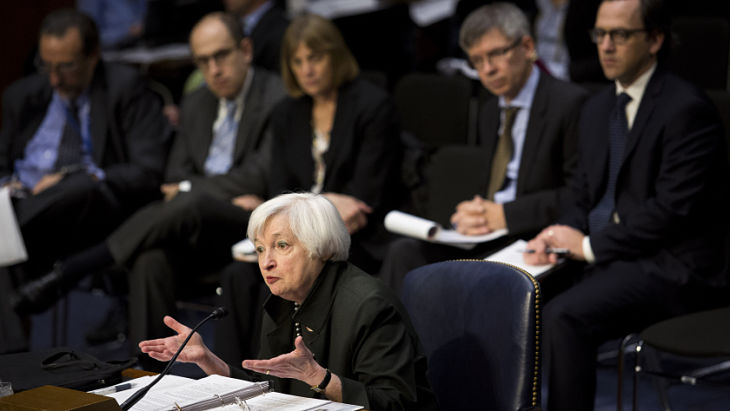The Great Recession
The recession that began in 2008 was much more than a business cycle recession, in our view; it was a balance sheet recession. Consumers and businesses had too much debt, much of it secured against assets that were overvalued and whose value was falling.
Recovery from such recessions has historically taken much longer and the risk of a deflationary depression is very real. Ben Bernanke and his colleagues decided radical monetary action was needed.
Short-term interest rates were cut to around zero and; in addition, the Fed chose to influence the level of long-term interest rates for the first time since the early 1950s.
Their program, which became known as “Quantitative easing” (QE), involved the Fed using its balance sheet to systematically purchase both Treasury and Mortgage bonds. Investors took their lead from the Fed and 10-year Treasury yields fell from around 4% to around 1.5% between 2010 and 2013 even as the economy recovered.
The Fed’s QE program ended in November 2014 and in December 2015 it raised short-term interest rates for the first time in the current expansion (by 0.25%). Despite this, the Federal Reserve has since been at pains to stress that the economy needed very low interest rates for long enough to ensure the expansion (now in its seventh year) wouldn’t falter.
During the last seven years, the unemployment rate has fallen from 10% to its current level of just 4.6% and the Fed has clearly signaled it is ready to raise short-term interest rates again (another 0.25% is widely expected).
How many more times the Fed raises rates in 2017 will likely depend on the extent of policy stimulus enacted by the Trump administration and Congress, but if President Trump comes anywhere close to achieving his goal of faster economic growth, or if his policies result in accelerating inflation (both of which we believe are directionally correct), then both short and long-term interest rates will rise.
As we examine the various scenarios that may unfold in 2017, we will seek to handicap how much rates may rise under different scenarios. That said, last week Chief Fixed Income Officer Tim Anderson clearly outlined how Riverfront is positioning its portfolios for the current environment.
His message was simple: “Our first line of defense in our balanced portfolios is to underweight bonds vs equities. We prefer bonds that act somewhat like stocks (high yield) and investment grade bonds over Treasuries. In our Moderate Growth and Income bond portfolio, we have lowered duration from 7.3 years to 4.1 years”. We believe we are ready to navigate a world of higher rates.
Rod Smyth is the Chief Investment Strategist at RiverFront Investment Group, a participant in the ETF Strategist Channel.
Important Disclosure Information
Investments in international and emerging markets securities include exposure to risks such as currency fluctuations, foreign taxes and regulations, and the potential for illiquid markets and political instability.
High yield securities (including junk bonds) are subject to greater risk of loss of principal and interest, including default risk, than higher-rated securities.
Stocks represent partial ownership of a corporation. If the corporation does well, its value increases, and investors share in the appreciation. However, if it goes bankrupt, or performs poorly, investors can lose their entire initial investment (i.e., the stock price can go to zero). Bonds represent a loan made by an investor to a corporation or government. As such, the investor gets a guaranteed interest rate for a specific period of time and expects to get their original investment back at the end of that time period, along with the interest earned. Investment risk is repayment of the principal (amount invested). In the event of a bankruptcy or other corporate disruption, bonds are senior to stocks. Investors should be aware of these differences prior to investing.
In a rising interest rate environment, the value of fixed-income securities generally declines.
RiverFront Investment Group, LLC, is an investment advisor registered with the Securities Exchange Commission under the Investment Advisors Act of 1940. The company manages a variety of portfolios utilizing stocks, bonds, and exchange-traded funds (ETFs). Opinions expressed are current as of the date shown and are subject to change. They are not intended as investment recommendations.

